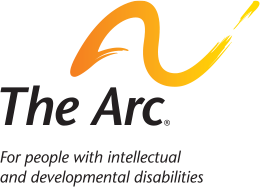Why Public Education Matters for Students With Disabilities and for Us All
Public education is one of our country’s most important promises: a commitment that every child, no matter their abilities or background, deserves the opportunity to learn, grow, and participate fully. For the 95% of students with disabilities who attend public schools, that promise is both vital and vulnerable.
Today, that promise is under strain. Funding shortfalls, teacher shortages, and policies that divert resources away from public schools threaten the foundation of inclusive education. For families of students with disabilities, those challenges are deeply personal.
Stories of families like Amanda’s, Christina’s, Kristen’s, and Susannah’s remind us why public schools and special education services must be protected and strengthened, not dismantled or defunded.
Reaching Her Potential: Kristen’s Journey to Graduation

As a former special education student, Kristen knows firsthand how a strong public education can shape a person’s future. Kristen credits her Individualized Education Program (IEP) team and family for helping her meet her goals and graduate high school, something that might not have been possible without that support.
Now an adult, Kristen advocates for reinvesting in public education so that every student, with or without disabilities, has the same opportunity to succeed.
“This is not the time to take money from public schools but rather to put more money into public schools and services so all students have the opportunity to achieve their goals and reach their full potential, like I was given.”
Building Confidence and Hope: Amanda’s Family Finds Support
When Amanda’s son was diagnosed with ADHD, her family worried about how he would manage in school. But public education gave them more than academic success; it gave them hope.
“Thanks to dedicated special education teachers and an individualized support plan, [my son] received the guidance and attention he needed. The school helped him build confidence, develop important skills, and feel supported every step of the way. These services didn’t just help him do better in class; they gave our whole family hope and relief.”
The Only Door That Opens: Susannah’s Fight for Inclusion

For Susannah, the promise of public education isn’t theoretical—it’s the only thing standing between her child and exclusion. Her 12-year-old son has a rare genetic disorder, Turnpenny-Fry syndrome, and requires significant support to learn safely and effectively.
Private schools turned him away, even with tuition assistance through a voucher. Public school was the only place willing and equipped to meet his needs, with specialized staff, accommodations, and a commitment to serve every child.
“More vouchers for private schools would directly harm my child,” Susannah said. “Federal funding is vital to ensure his constitutional right and access to a free, appropriate education.”
Starting Early: Christina’s Story of Hope and Early Intervention
For Christina’s son, the public education system’s support began before preschool. Through the North Carolina Infant-Toddler Program, he receives critical early intervention services, made possible through federal law under the Individuals with Disabilities Education Act (IDEA).
“It was clear early on that [my son] had global delays. He wasn’t making eye contact and was having a hard time lifting his head during tummy time. After a medically complex diagnosis, it was important to get interventions and therapies in place. By 6 months old, [my son] already had an individualized family service plan put in place under IDEA. With these plans, a team is able to assist in ensuring that he gets the interventions he needs through physical therapy, occupational therapy, vision therapy and speech. This plan will help him has he enters the school system at the age of 3 and beyond.”
Early intervention can change the course of a child’s life. These programs not only prepare children for school but help families understand how to support their development from the very beginning.
Protecting a Promise and Strengthening a System We All Depend On
These stories remind us that public education and special education are not optional extras. They are essential civil rights and the foundation of an inclusive society.
The current public school system isn’t perfect. It needs more funding, more staff, and more understanding. The answer isn’t to pull resources away or funnel them into systems that exclude the very students who need support most.
We must strengthen public schools by investing in teachers, therapists, and aides; expanding early intervention; and honoring our collective promise that every child deserves a chance to learn.
Public education is not just a service. It’s a commitment to fairness and inclusion. It’s how we, as a society, say to every child: You belong here, you matter, and we will help you succeed.
Take Action Today: Tell Congress to Protect this Promise for All Students.



 Emanuel, a child with autism, struggled to keep pace in class. Thanks to tech coaching at The Arc of South Florida, funded by Comcast, he discovered a world of possibilities. Emanuel was trained on the Starfall app, which made reading come alive for him and improved his comprehension. He mastered typing skills and learned to do online research for projects. A visual schedule helped him organize assignments.
Emanuel, a child with autism, struggled to keep pace in class. Thanks to tech coaching at The Arc of South Florida, funded by Comcast, he discovered a world of possibilities. Emanuel was trained on the Starfall app, which made reading come alive for him and improved his comprehension. He mastered typing skills and learned to do online research for projects. A visual schedule helped him organize assignments.















